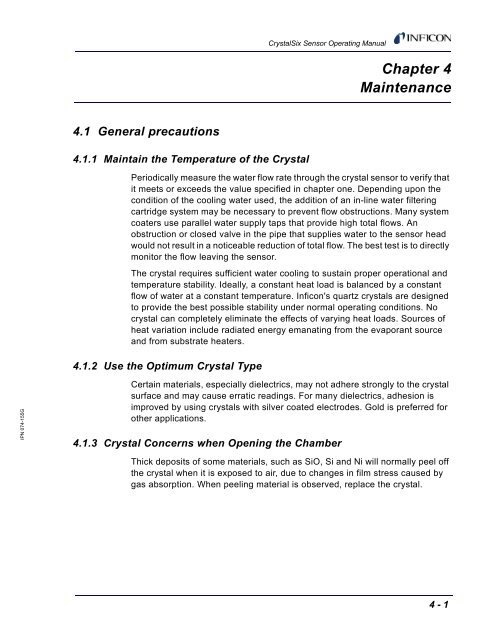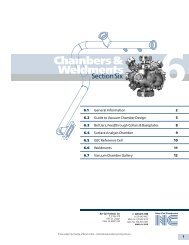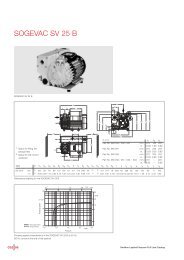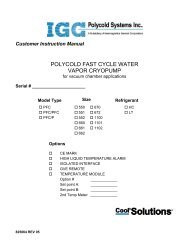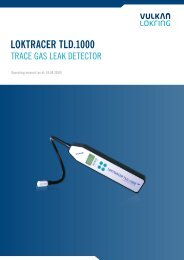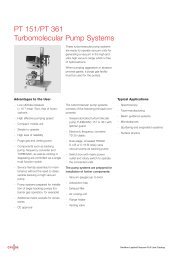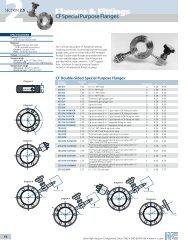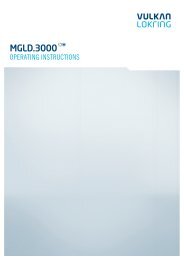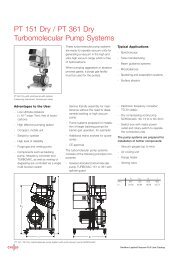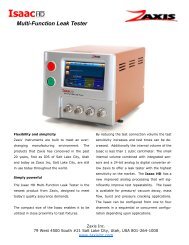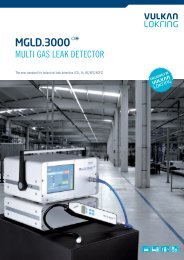CRYSTALSIX - Schoonover, Inc.
CRYSTALSIX - Schoonover, Inc.
CRYSTALSIX - Schoonover, Inc.
Create successful ePaper yourself
Turn your PDF publications into a flip-book with our unique Google optimized e-Paper software.
CrystalSix Sensor Operating Manual<br />
Chapter 4<br />
Maintenance<br />
4.1 General precautions<br />
4.1.1 Maintain the Temperature of the Crystal<br />
Periodically measure the water flow rate through the crystal sensor to verify that<br />
it meets or exceeds the value specified in chapter one. Depending upon the<br />
condition of the cooling water used, the addition of an in-line water filtering<br />
cartridge system may be necessary to prevent flow obstructions. Many system<br />
coaters use parallel water supply taps that provide high total flows. An<br />
obstruction or closed valve in the pipe that supplies water to the sensor head<br />
would not result in a noticeable reduction of total flow. The best test is to directly<br />
monitor the flow leaving the sensor.<br />
The crystal requires sufficient water cooling to sustain proper operational and<br />
temperature stability. Ideally, a constant heat load is balanced by a constant<br />
flow of water at a constant temperature. Inficon's quartz crystals are designed<br />
to provide the best possible stability under normal operating conditions. No<br />
crystal can completely eliminate the effects of varying heat loads. Sources of<br />
heat variation include radiated energy emanating from the evaporant source<br />
and from substrate heaters.<br />
4.1.2 Use the Optimum Crystal Type<br />
IPN 074-155G<br />
Certain materials, especially dielectrics, may not adhere strongly to the crystal<br />
surface and may cause erratic readings. For many dielectrics, adhesion is<br />
improved by using crystals with silver coated electrodes. Gold is preferred for<br />
other applications.<br />
4.1.3 Crystal Concerns when Opening the Chamber<br />
Thick deposits of some materials, such as SiO, Si and Ni will normally peel off<br />
the crystal when it is exposed to air, due to changes in film stress caused by<br />
gas absorption. When peeling material is observed, replace the crystal.<br />
4 - 1


